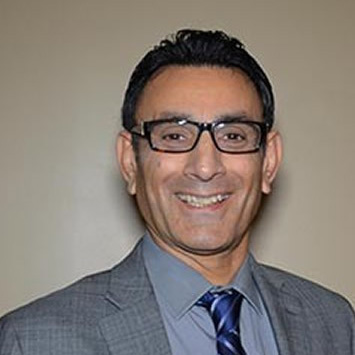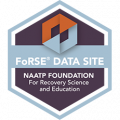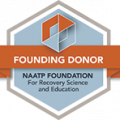What Is Xanax?
What Benzodiazepines Do to the Brain
Taking these medications recreationally can lead to:
• memory loss
• confusion
• blurred vision
• weakness and decreased respirations
Many who abuse benzodiazepine products do so because the drug creates a state of extreme relaxation and, for some, a sense of being “high” or disconnected. Your brain will try to work around these medications to return to your normal level of alertness. If you weren’t struggling with anxiety symptoms before taking benzos as a recreational drug, you might struggle with them after you stop taking the drug.

Benefits of Fitness Programs for Those in Recovery
Some form of exercise can do a great deal to help you fight symptoms of anxiety and depression. Getting your body moving can also help you sweat out toxins and increase healthy hydration. Finally, a focus on fitness and wellness will support your body as your mind and spirit work through the toughest part of detox.
Workout Ideas
• gentle yoga
• tai chi
• swimming and water aerobics
• walking
You can enjoy these activities in a group setting or on your own. If you’re working through detox and are struggling with group sessions or talk therapy, your workout may be your time to enjoy a bit of solitude.
Once your body is moving effectively, and any pain is being managed, you may be ready to increase the intensity of your workouts. You may be able to go from walking to running or to a low-impact aerobic exercise class. You may be able to move from gentle yoga to a more intense program. Make sure that you stay hydrated. Xanax detox symptoms can include cramping, and dehydration will make it much worse.
Xanax can be hard on your heart. Your treatment plan, including detox, may include regular cardiac monitoring. Your workouts will likely be tied to elevating your heart rate incrementally instead of pushing hard to raise your pulse to an extreme level. As your body clears the toxins and comes back into balance, you may be able to build up to a new level of fitness. Make sure that you stay hydrated to avoid cramping and do not push past a healthy heart rate as determined by your most recent assessment.
Nutritional Choices
Your nervous system is supported by healthy fats. Your soft tissues, organs, and brain are supported by antioxidants and carbohydrates. Your gut and heart are protected by healthy fiber. Many of these systems may have been negatively impacted by Xanax use, so it’s important that you’re eating the right foods to restore them.
A simple set of dietary choices could include:
• whole-grain toast, peanut butter, and fresh fruit for breakfast
• sugar-free yogurt and naturally sweetened granola for a snack
• a chopped green salad and grilled salmon for lunch
• crudites for an afternoon snack
• lean turkey breast, fresh spinach, and brown rice for dinner
Detoxing from benzodiazepines will require you to guard your nervous system against anything that can be agitating, such as sugar and caffeine. If you were prescribed benzodiazepines for anxiety initially but had begun to abuse them long-term, managing agitation will need to be part of your daily routine.
A focus on slow-release carbs that will give you energy over time instead of a big jolt of glucose at one time is the best way to protect your brain from agitation. Consider pairing mealtimes with other calming routines, from meditation to prayer to simple deep breathing exercises.
Many people who struggle with agitation and anxiety can also have stomach challenges, and Xanax can have a negative effect on the digestive tract. If you struggle with heartburn, constipation, ulcers along the digestive tract, reflux, or GERD, consider adding 1/4 cup of unsweetened applesauce to your evening routine to settle down nighttime stomach acid.

Community Support and Connections
You may also be encouraged to reach out to groups in the community that are welcoming to those in recovery. You may get the chance to volunteer at an animal shelter for a physical connection that doesn’t require you to engage in conversation. You could take a class to learn a new skill, develop new hobbies, or even start a side hustle.
Understand the Risks
Xanax abuse can become dangerous over time. Many who use Xanax illegally pair it with other medications that increase the danger factor. Xanax is a depressant. Overdosing on it or pairing it with other depressants can lead to respiratory failure. Looking for illegal, non-prescription sources of Xanax can put you at risk of counterfeit or tainted medications. It can also put you in the company of people who have no regard for your personal safety.
Getting Help
For those who have long struggled with anxiety, Xanax can be incredibly helpful. However, it’s generally not considered to be a healthy long-term option. If you have found this prescription to be so helpful that you’re not sure you can taper off of it, make sure you talk to your physician about your worries. There is no shame in developing a substance use disorder, but seeking help will take courage. Your well-being is worth taking the step of asking for help.
Many who have faced the treadmill of spinning anxious thoughts found great relief the first time they used Xanax. However, without an effective treatment program that targets the source of the anxiety, medications are only a stopgap. Xanax is a temporary roadblock to stop that spin.
Detox and Treatment
You may need partial hospitalization to best determine and treat any underlying conditions. You may be able to move directly into outpatient treatment. At every step of the way, you deserve support, care, and community.
The work of recovery will be much easier and safer for you with a support team on your side. Contact First City Recovery Center at 877-595-3330 for a conversation about your concerns and experiences. Because substance use disorder is a complicated condition with many factors contributing to the illness, working with a team that is focused on your physical well-being, your mental health, and your ability to get the support you need increases your chance of success.

















